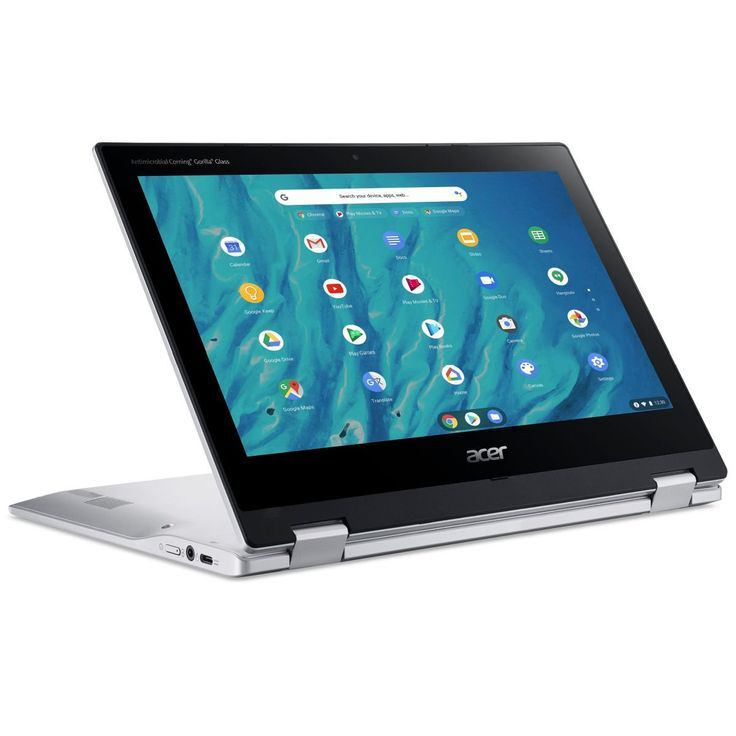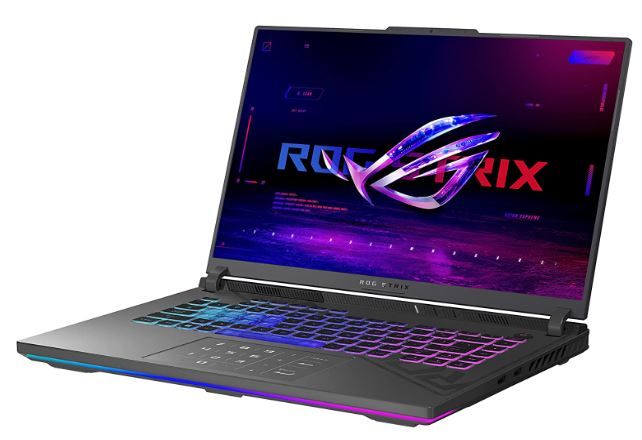Laptop Buying Guide 2023

Introduction
Purchasing a new laptop can be an exciting but daunting task with the wide variety of options available today. This laptop buying guide will help you find the perfect laptop for your needs and budget.
Outline
- Introduction
- Determine Your Needs
- Everyday tasks vs power user
- Portability
- Gaming
- Business/Productivity
- Multimedia editing
- Operating System
- Windows
- MacOS
- ChromeOS
- Specifications
- CPU
- RAM
- Storage
- Display
- Graphics card
- Ports
- Battery life
- Weight
- Features
- Keyboard
- Touchpad
- Webcam
- Speakers
- Stylus/touchscreen
- Budget
- Brands -Conclusion
Introduction
There are many factors to consider when looking for a new laptop. First and foremost, think about what you plan to use the laptop for. Are you a student that needs a laptop for everyday tasks like writing papers, browsing the Internet and watching Netflix? Or are you a power user that requires top processing power for gaming or video editing? Determining how you plan to use your laptop will help narrow down the choices.
Next, consider portability. Do you want an ultra lightweight laptop to carry around campus or travel with? Or will a heavier, bulkier gaming laptop be staying at your desk most of the time?
You’ll also want to set a budget. Laptops can range from a couple hundred to several thousand dollars. Setting a budget will eliminate models that are too expensive or inexpensive for your needs.
This laptop buying guide breaks down the key factors to get you started on the path to purchasing your ideal laptop.
Also Read:
https://besraha-news.online/camera-accessories-list/
Determine Your Needs
Before diving into specific features and models, first decide how you intend to use your laptop. This will determine what specs and capabilities you should prioritize.
Everyday Tasks vs Power Users
If you plan to use your laptop for common activities like browsing the web, watching videos, writing documents and communicating over email and social media, you won’t need top of the line components. Entry level processors and standard RAM and storage should suffice.
Power users who work with large files, high resolution images/videos, programming code or games will want higher tier processors, maximum RAM and fast solid state drives.
Portability
If you intend to frequently transport your laptop, keep weight and size in mind. Ultraportable laptops weigh 2 to 3 pounds and are less than 0.7 inches thick. The lightest models sacrifice computing power for mobility.
Those who don’t plan to travel often with their laptop can opt for larger, heavier models up to 5 pounds with bigger screens and full powered components. Desktop replacements fit in this category.
Gaming
Gamers require laptops with dedicated graphics cards, fast refresh rate displays and quick processors. Nvidia and AMD are the major graphics card providers. For high level gaming, look for at least an Nvidia RTX 3060 or AMD Radeon RX 6600M.
Business/Productivity
Professionals looking for a work laptop should seek out high resolution displays, robust processors and ample storage for multitasking. Long battery life is also ideal to keep you running throughout the workday. Popular choices include Ultrabooks like the Dell XPS, HP Spectre and Microsoft Surface.
Multimedia Editing
For graphic design, video editing and other creative tasks, laptops with fast CPUs like Intel Core i7/i9 or Apple M1/M2 chips are necessary. GPUs also assist with rendering visuals and high resolution displays provide accurate color reproduction. Look for at least 16GB RAM and 512GB storage. The MacBook Pro lines are favored by creators.
Operating System
Decide which operating system works best for your personal needs and preferences.
Windows
The most common OS offers compatibility with the widest range of software and games. Models run from budget friendly to high end. Top manufacturers include Dell, HP, Lenovo, Asus and Acer. Downsides include higher vulnerability to viruses and slower updates compared to MacOS.
MacOS
Apple’s intuitive, user friendly OS appeals to creators and power users. The walled garden ecosystem ensures tight integration between Macs, iPhones and iPads. Drawbacks are higher prices, lack of upgradeability and gaming limitations.
ChromeOS
Google’s lightweight OS relies heavily on cloud storage and web based apps. Ideal for budget buyers and students needing an affordable device for browsing and documents. Limited offline functionality and compatibility however. Popular Chromebook makers include Lenovo, HP, Acer and Asus.
Specifications
Technical components directly impact performance. Here are the key laptop specs to evaluate based on your usage needs.
CPU
The central processor is akin to the laptop’s brain. Intel and AMD dominate the CPU market.
Intel processors include:
- Core i3 – Entry level suited for basic tasks
- Core i5 – Mid-range ideal for mainstream users
- Core i7 – High end for gamers and creative pros
- Core i9 – Top tier for max performance
AMD processors:
- Ryzen 3 – Budget focused but solid productivity
- Ryzen 5 – Great mid-range combination of multi and single core performance
- Ryzen 7 – High performance for gaming, video editing and graphics work
- Ryzen 9 – Top of the line power for intensive creative workloads
For Apple laptops, the proprietary M-series chips deliver excellent performance:
- M1 – Great speed and efficiency for entry level MacBooks
- M2 – Faster and newer successor to M1 suited for prosumers
RAM
System memory impacts multitasking capabilities. For most users 8GB RAM will suffice, while 16GB is recommended for power users. Gamers and creative pros may benefit from 32GB RAM or higher. For Macs, 8GB unified memory is capable for average workloads.
Storage
Two types of storage devices are used in laptops:
HDDs (hard disk drives) – Spinning drives offer more capacity for the price, but are slower and more prone to damage from drops. Ideal for budget buyers and those who need ample storage.
SSDs (solid state drives) – Silent, faster, more reliable and durable than HDDs. But more expensive per gigabyte. Well suited for performance focused users.
For everyday use, 256GB SSD storage should be adequate. 500GB or higher is better for gaming and creative applications involving large files. Some laptops support both HDD and SSD.
Display
Several factors impact display quality:
Size – Standard laptop screens range from 13 to 17 inches measured diagonally. Ultraportables and 2-in-1s have 12 to 14 inch displays. 17 to 18 inch screens are desired for serious gamers and creative work requiring substantial screen real estate.
Resolution – Minimum of 1920 x 1080 FHD resolution. QHD (2560 x 1440), 4K (3840 x 2160) and retina offer extra sharpness for graphics/video editing.
Refresh rate – Standard is 60Hz. Fast paced games require 144Hz, 240Hz or 360Hz displays to prevent ghosting and tearing.
Aspect ratio – Widescreen 16:9 is mainstream. 2-in-1s use 16:10 or 3:2 for added vertical space.
Touch – Useful for drawing/notation with a stylus. Often seen in 2-in-1 laptops.
Color accuracy – Important for photo/video editors. Look for at least 100% sRGB coverage.
Graphics Card
Integrated GPUs harness shared resources for basic visual tasks. Dedicated graphics cards have their own memory for enhanced gaming, video editing, 3D modeling etc. Nvidia GeForce RTX and AMD Radeon RX lines offer a range from entry to high level graphics.
Ports
Take stock of the ports you will need:
- USB Type A – Standard rectangular USB ports used for connecting peripherals
- USB Type-C – Oval shaped reversible USB standard that supports charging and Thunderbolt speeds
- HDMI – Video out port for external monitor connection
- 3.5mm audio jack – For wired headphones
- SD card reader – Convenient transfer of photos/videos from cameras
Make sure the laptop has enough ports for your accessories and peripheral needs.
Battery Life
Important for mobility. Aim for at least 8 hours of usage per charge. CPUs and high resolution displays drain more battery.
Weight
Ultraportables under 3 pounds are ideal for frequent travel. 17 inch gaming laptops can weigh up to 5-6 pounds.
Features
Additional aspects that enhance the computing experience.
Keyboard
Look for responsive keys with sufficient travel and spacing for comfortable typing. Backlit keyboards assist in dim lighting.
Touchpad
For controlling the cursor without a mouse. Seek out smooth, accurate tracking and tapping. Multi-touch gestures should also be responsive.
Webcam
Sufficient resolution for clear video calls and conferences. 720p (HD) is typical.
Speakers
Quality sound is desirable for multimedia and gaming. Seek loud, clear audio with minimal distortion. External speakers may be preferred for bass.
Stylus & Touchscreen
2-in-1 laptops allow stylus input for drawing, sketching and handwritten notes. Touchscreens enhance navigation for some users.
Budget
Laptop prices span from under $200 for basic Chromebooks to well over $3000 for top of the line gaming rigs and MacBook Pros. Set realistic expectations based on your usage needs and finances.
Here are rough price ranges to expect for laptops with mainstream specs suitable for each tier of user:
- Budget – $250 to $600 for Chromebooks and entry level Windows laptops
- Mainstream – $600 to $1200 for mid-range Windows and MacBooks suitable for students and productivity focussed users
- Enthusiasts – $1200 to $2000 for high end Windows gaming rigs and MacBook Pros
- Professional – $2000+ for maxed out configurations and workstation class laptops
Allow several hundred dollars of buffer for higher specs like more RAM, larger SSDs and improved displays if your workload calls for it.
Best Laptop Brands
Top rated manufacturers known for quality products include:
- Apple – Premium ultraportables, impressive M-series powered MacBooks
- Dell – Reliable business and high end XPS lines
- HP – Robust selection from budget to workstations
- Lenovo – Affordable Ideapads, premium Thinkpad series
- Asus – Renowned gaming rigs, thin and light Zenbooks
- Acer – Budget friendly Aspire and durable Travelmate series
- Microsoft – Well built Surface devices ideal for Windows users
Stick to tier 1 brands for the best support, build quality and component compatibility.
Conclusion
Finding your perfect laptop involves balancing performance, portability, features and cost. Consider how you intend to use your laptop and which specs are must-haves versus nice-to-haves. Do your research and check reviews for models that best align with your computing preferences and budget. Weighing all the options presented here will lead you to your ideal laptop for work and enjoyment!
Sources:
https://www.pcmag.com/picks/the-best-laptops
https://www.techradar.com/news/mobile-computing/laptops/best-laptops-1304361







